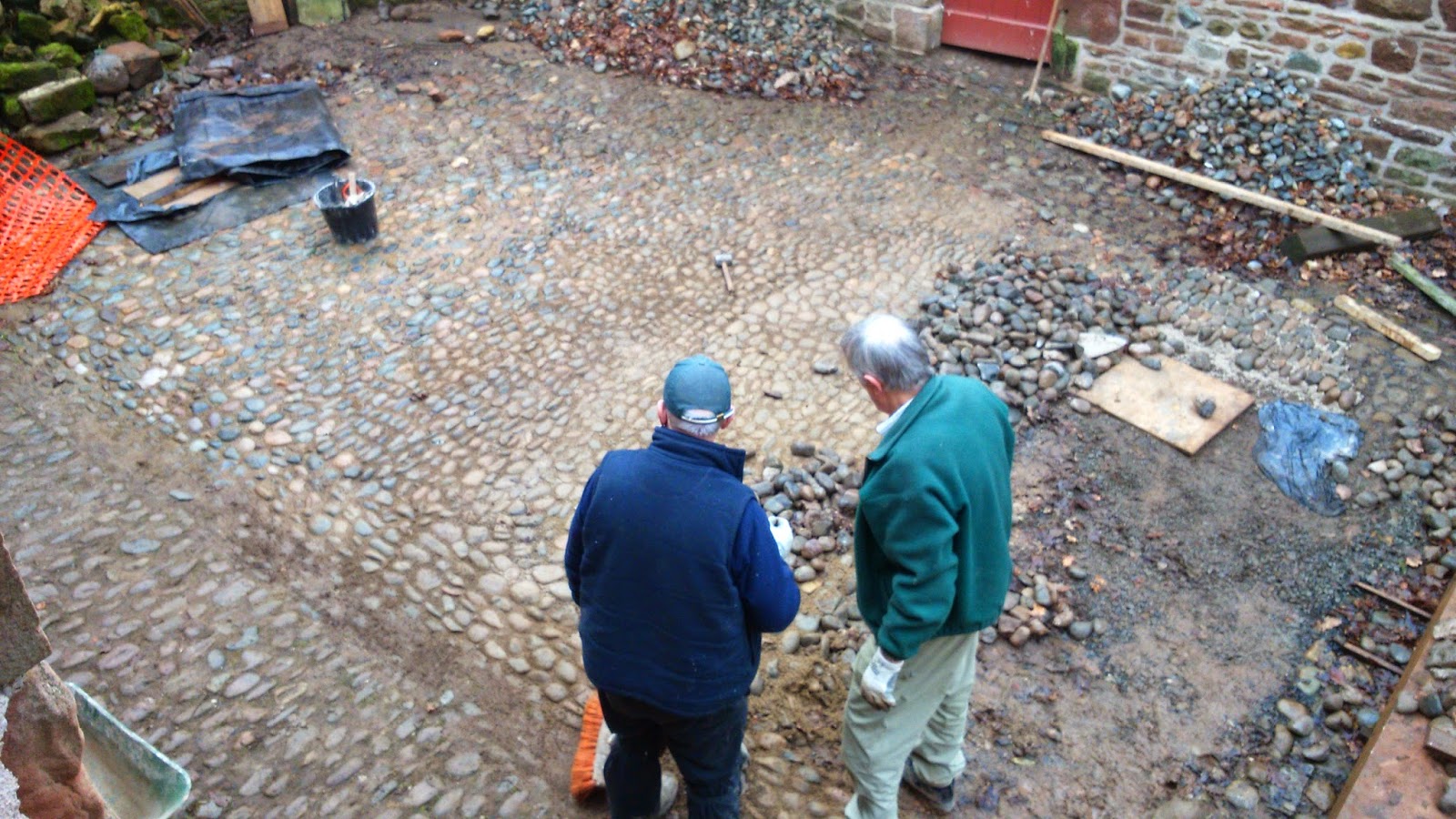 The big stone beams were then installed and finally the iron joists that will support the kiln tiles. Here the angle iron beams are temporarily supported on wood blocks while the cement that holds them in place dries.
The big stone beams were then installed and finally the iron joists that will support the kiln tiles. Here the angle iron beams are temporarily supported on wood blocks while the cement that holds them in place dries. Finally the capstones were added to the tops of the walls. These are machine cut and look rather out of place, but we are told that is how it has to be.
Finally the capstones were added to the tops of the walls. These are machine cut and look rather out of place, but we are told that is how it has to be.We volunteers are going to carry out the rest of the work - floorboarding, safety fences and putting in place what kiln tiles we have.
It will not be possible to fully restore the kiln, as we only have about 55 of the 144 kiln tiles we would need. The proposal is, therefore, to put the ones we have in place as a kind of cut-away, so visitors can still see down to the fire box. Interestingly, some of the tiles are exactly 12 inches (30.5 cm) square, and some are 31 cm!
 The kiln tiles we have are all iron, and have corroded badly since they were last used, even to the extent of blocking many of their perforations. Donald and David are seen here wire brushing the tiles and re-opening the holes with a punch, before Ray gives them a coat of paint.
The kiln tiles we have are all iron, and have corroded badly since they were last used, even to the extent of blocking many of their perforations. Donald and David are seen here wire brushing the tiles and re-opening the holes with a punch, before Ray gives them a coat of paint. We have also started fitting the floorboards, not an easy task as the kiln as rebuilt is not exactly square, and both its sides are at an angle to the outside walls of the room. We have been instructed to use cut clasp nails. Due to their blunt ends they don't easily penetrate the boards, so we have taken to drilling 5mm pilot holes.
We have also started fitting the floorboards, not an easy task as the kiln as rebuilt is not exactly square, and both its sides are at an angle to the outside walls of the room. We have been instructed to use cut clasp nails. Due to their blunt ends they don't easily penetrate the boards, so we have taken to drilling 5mm pilot holes.





















